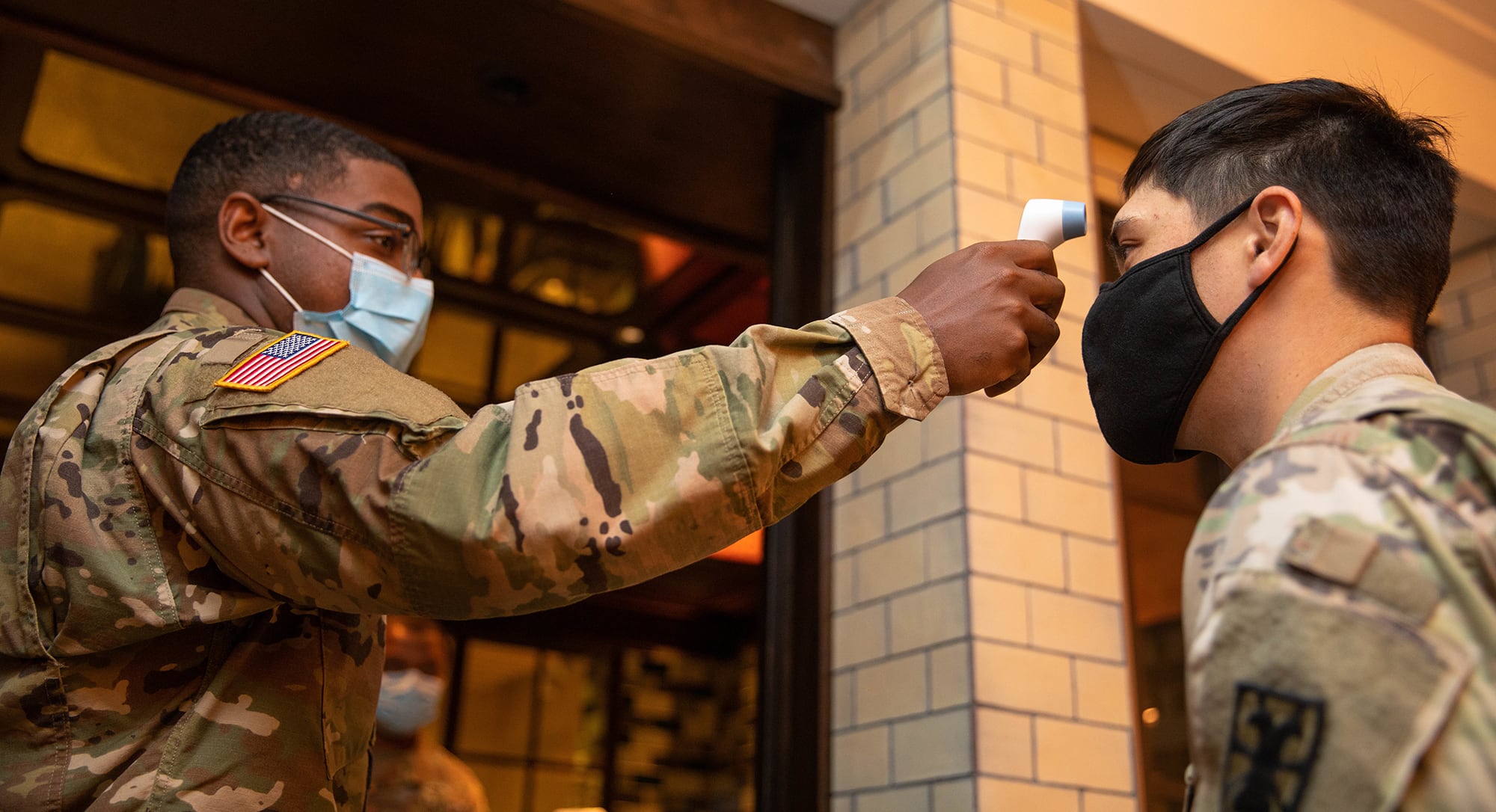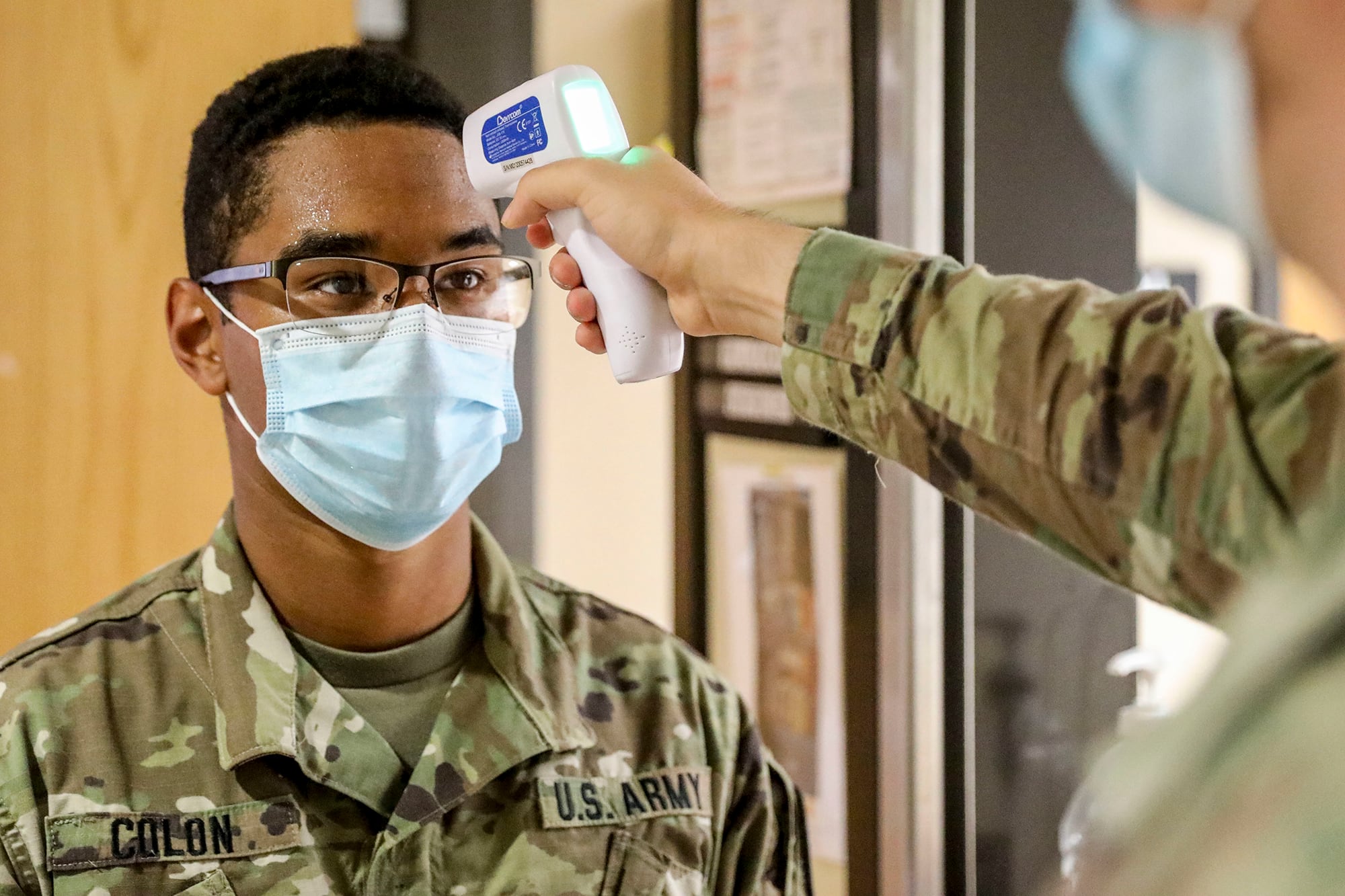The military’s biggest age demographic is testing positive for COVID-19 more often than civilians in the same group, the Pentagon’s top doctor told reporters on Thursday.
Increased testing is the presumed reason why.
Though Air Force Brig. Gen. Paul Friedrichs, the Joint Staff surgeon, did not provide the specific infection rate for troops aged 18 to 24, he said it’s slightly higher than young adults nationwide. The Centers for Disease Control and Prevention does not post centralized data about infections by age.
“We believe that the slightly increased confirmed case rate in that age group is a result of the success of ... allowing us to test at the entry to basic training, at the exit to basic training and at many other points in an active-duty service member’s career,” Friedrichs said.
Put simply, so many young troops are either beginning their military careers or preparing to deploy overseas that their positive rate is skewed higher, officials said. Overall, the military’s infection rate stands at just over 1 percent, the same as the U.S. population in general.
The finding comes after several months of ramping up testing has put the Defense Department at 60,000 tests a week ― a figure first proposed by Army Gen. Mark Milley, the Joint Chiefs chairman, as a daily goal back in April ― for a total of more than 540,000 since January.
Part of that plan, which came in four tiers of priority, includes testing every recruit who ships to initial entry training, either upon arrival, upon leaving or at both points, depending on the service.
They are part of the “tier one” group, along with high-end counter-terror units and nuclear deterrence commands, like Air Force bomber and Navy submarine crews. Next up are deploying and redeploying troops, followed by troops leaving on or returning from overseas assignments.
“We don’t exactly have those specific numbers in terms of what percentage are asymptomatic versus symptomatic,” Air Force Maj. Gen. Lee Payne, who heads up DoD’s coronavirus testing efforts, told Military Times, but his team is working to compile those and break them out by tier.
As of Wednesday, more than 26,000 service members have contracted COVID-19, and more than 14,000 of those cases are still active.
Payne added that about half of positive tests are coming from personnel going into clinics either with symptoms, to prepare for a medical procedure or as part of a contact tracing effort because of their proximity to another positive case.
“The rest of the tests, probably about 20,000 or more per week, are asymptomatic, because those are people we’re screening for mission readiness,” he said.
That asymptomatic testing has helped control outbreaks, he said, because anyone who comes back positive is then isolated, and their close contacts are also tested and isolated.
To date, three service members have died and under 500 have been hospitalized, rates far below the numbers for U.S. residents, which include more than a 3 percent mortality rate currently.
For the military, however, the question becomes how sidelining tens of thousands of troops ― for as little as two weeks, but into multiple months if they are recovering from symptomatic illness ― affects mission readiness.
RELATED

Luckily, Friedrichs said, those cases haven’t come all at once,
“We’ve been able to minimize the number of outbreaks that have taken an entire unit down or an entire capability down,” he said.
However, the number of cases continue to rise, as states with large force concentration ― like Texas, California, Arizona and Florida ― grapple with record-breaking spikes.
Officials have pointed to community transmission in those areas as part of the reason for rising cases in the military, while at the same time, enforcement of face coverings, social distancing and outright bans on crowded places like bars and restaurants have been left up to individual units.
“We’ve not seen any widespread evidence that what’s occurring in the 18-to-24 demographic is because they’re not following the rules,” Friedrichs said.
Meghann Myers is the Pentagon bureau chief at Military Times. She covers operations, policy, personnel, leadership and other issues affecting service members.









